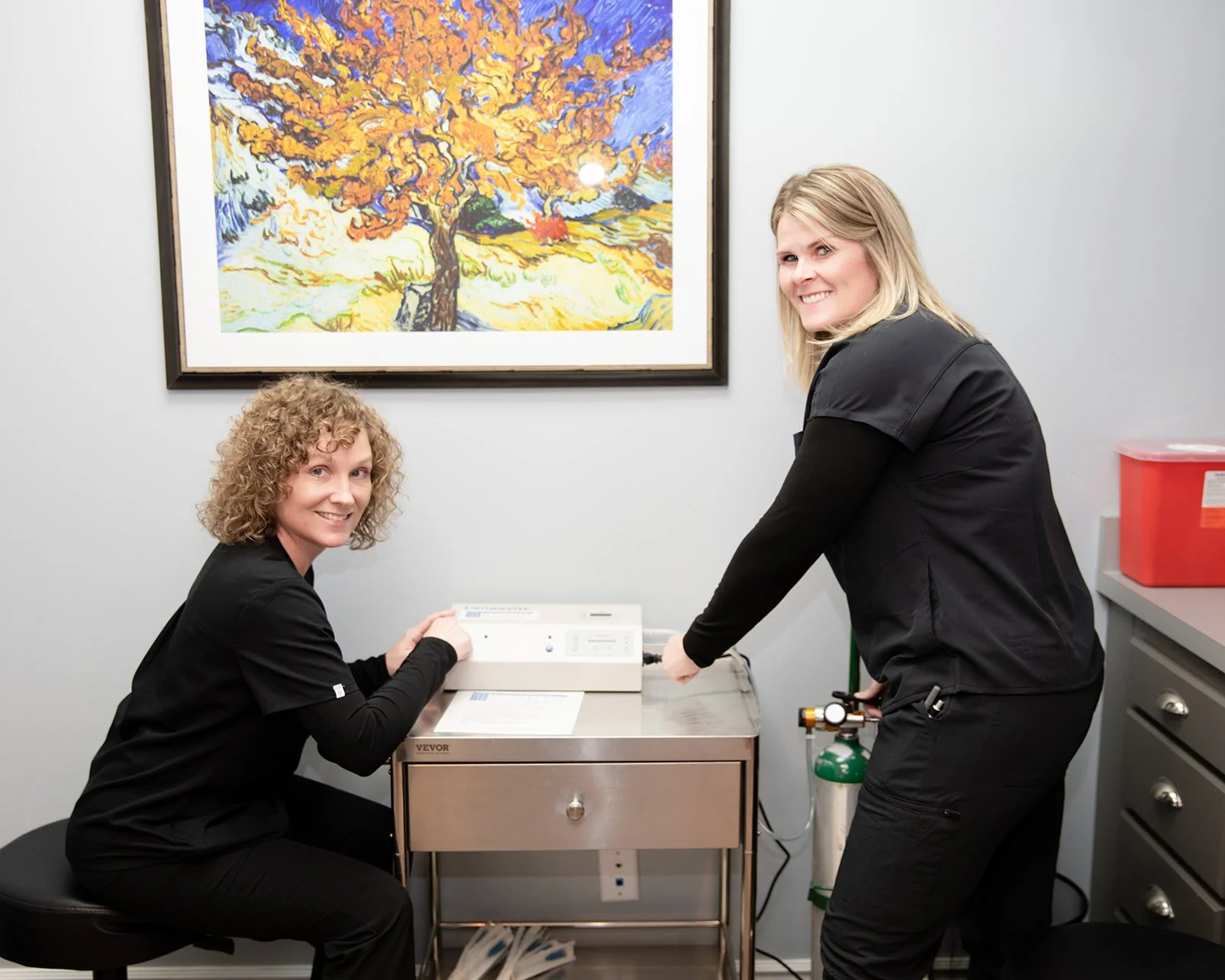Ozone Therapy
Cancer changes the body’s internal landscape in profound ways—disrupting oxygenation, altering immune activity, and creating metabolic strain.
Ozone therapy offers a scientifically grounded way to counter these shifts. When administered correctly and in precise therapeutic doses, ozone (O₃) can stimulate immune function, modulate inflammation, enhance tissue oxygenation, and help the body clear cellular debris.
Ozone therapy is a supportive therapy used to strengthen your internal terrain—helping other treatments work more effectively while improving how you feel day-to-day.

Why Our Patients Choose Ozone Therapy
Cancer creates a low-oxygen, inflammatory environment that weakens immunity and reduces treatment tolerance. Therapeutic ozone interacts with blood, tissues, and the immune system in ways that regulate, not suppress, physiologic function.
At the cellular level, ozone helps:
Improve oxygen delivery and mitochondrial energy production
Stimulate immune modulation and microbial balance
Increase antioxidant capacity and reduce oxidative stress
Enhance circulation and tissue repair
Support detoxification and metabolic efficiency
These mechanisms help shift the body from chronic strain toward equilibrium, making it easier to respond to treatment and harder for cancer to thrive.
Emerging research continues to highlight ozone’s therapeutic potential. Studies describe its role in modulating immune activity, improving redox balance, and enhancing tissue oxygenation. Clinical observations in oncology settings have also reported meaningful improvements in cancer-related fatigue and quality of life, without significant adverse effects.
Ozone is personalized to your biology. It is often combined with other integrative therapies—such as hyperthermia, IV Vitamin C, mistletoe, and dietitian-guided metabolic support—to create a synergistic healing environment.
Ozone Therapies Offered at CIOFM
-
MAH is the most widely used form of medical ozone therapy. During treatment, a measured amount of your blood is gently drawn, infused with a precise concentration of ozone, and returned to the body intravenously.
Therapeutic benefits may include:
Improved oxygen utilization
Enhanced mitochondrial function
Reduction in cancer-related fatigue (supported by your attached study)
Strengthened immune surveillance
Reduced inflammatory cytokines
Support during chemotherapy, radiation, or immunotherapy
MAH is well-tolerated and is often part of a broader integrative protocol.
-
For certain tumors, carefully administered ozone can be injected directly into or around the tumor site. This localized therapy aims to:
Disrupt tumor metabolism
Create oxidative stress that cancer cells struggle to manage
Enhance local immune activity
Support apoptosis (programmed cancer cell death)
This technique is performed only when appropriate and with imaging guidance or precise anatomical targeting.
-
These forms of insufflation are well-studied, safe, and used widely in Europe. They allow ozone to be absorbed through mucosal membranes and enter circulation or act directly on nearby tissues.
Potential benefits:
Support for pelvic cancers or chronic inflammation
Balancing of the microbiome
Local immune regulation
Reduction in treatment-related irritation or microbial imbalance
Adjunctive support for urinary or gynecologic oncology cases
-
Prostate injections introduce ozone directly into the tissue to:
Increase oxygenation and circulation
Reduce inflammation and microbial load
Support immune engagement in the prostate microenvironment
Improve symptoms associated with treatment or tumor burden
This therapy is used selectively and only after appropriate evaluation.
Frequently Asked Questions
-
Ozone therapy uses a medical form of oxygen (O₃) to support cellular oxygenation, circulation, mitochondrial function, and immune activity. When administered at precise therapeutic doses, ozone interacts with blood and tissues in ways that help regulate inflammation and oxidative stress—two key factors in the cancer terrain.
-
When delivered correctly and with appropriate screening, ozone therapy has demonstrated a strong safety profile in oncology settings. Clinical studies and case series have reported meaningful improvements in symptoms such as fatigue, with no significant adverse effects. At CIOFM, all ozone therapies are performed by trained medical staff using strict protocols and medical-grade equipment.
-
No. Ozone therapy is not a stand-alone cancer treatment and is not offered as a cure. At CIOFM, ozone is used as a supportive therapy—one that can enhance oxygen utilization, support immune function, improve treatment tolerance, and help optimize the internal terrain while you undergo standard oncology care.
-
We provide several forms of ozone therapy based on your needs and diagnosis:
MAH (Major Autohemotherapy)
Intertumoral ozone injections
Rectal insufflation
Vaginal insufflation
Bladder insufflation
Prostate injections
Your provider will help determine which approaches are appropriate for your treatment plan.
-
MAH (Major Autohemotherapy) is systemic. A small amount of your blood is drawn, combined with medical ozone, and returned intravenously to support whole-body oxygenation, mitochondrial function, and immune modulation.
Local injections or insufflations target specific tissues—such as the prostate, bladder, or tumor environment—for more focused support. -
Yes, in most cases. Ozone may support mitochondrial resilience, improve circulation, reduce inflammation, and ease treatment-related fatigue. Because ozone modulates (rather than suppresses) immune activity, it can be used alongside many conventional therapies.
Your treatment plan will always guide the timing and frequency of ozone therapy. -
Most patients tolerate ozone therapy well.
MAH feels similar to a standard IV session.
Insufflation therapies may cause mild pressure or warmth.
Localized injections (such as intertumoral or prostate) may produce brief discomfort.
Your provider will walk you through what to expect and ensure you are comfortable throughout the treatment.
-
Frequency varies depending on your diagnosis, symptoms, and treatment phase. Some patients receive ozone once weekly during active treatment; others use it periodically to support recovery, metabolism, or immune regulation.
We personalize all recommendations to your terrain and therapeutic goals.
Start the Conversation
If you’d like to explore ozone therapy as part of integrative cancer care, we’re here to help you understand what’s appropriate and why.
New patients can explore our service process, and members can reach out directly to their provider to discuss how to add ozone therapy to their treatment plan.


